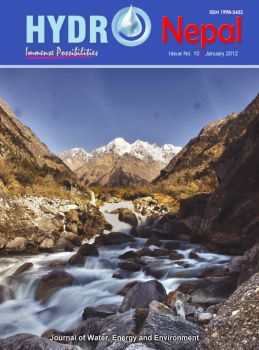Evaluation on the Potential Use of Shotcrete Lined High Pressure Tunnel at Upper Tamakoshi Hydroelectric Project
DOI:
https://doi.org/10.3126/hn.v10i0.7118Keywords:
Hydraulic fracturing, high pressure tunnel, shotcrete lining, Upper Tamakoshi Hydropower Project, NepalAbstract
Optimization of rock support is a key factor for successful use of underground space for hydropower development in the Himalaya. Therefore, finding innovative, optimum and economic solution will be the only way to guarantee such optimization. A main issue is to determine the extent of hydraulic fracturing and assess the water leakage possibility during the operation of such tunnels. The leaked water not only causes economic loss but also may severely affect the stability of tunnel, valley side slopes and the environment.
The use of fully concrete/steel lined pressure tunnels against hydraulic fracturing in the rock mass is a costly alternative. Hence, it is advantageous to explore possibilities of minimizing the length of the concrete or steel lining in high pressure tunnels and shafts. A proper assessment of hydraulic fracturing of the rock mass plays an important role in this endeavor.
This paper evaluates whether or not hydraulic fracturing (splitting) will occur at the 4,746m long shotcrete-lined high pressure headrace tunnel of 456 MW Upper Tamakoshi Hydroelectric Project (UTKHEP). The Upper Tamakoshi HEP is a high head project (gross head 822m) and the proposed shotcrete lined high pressure headrace tunnel will experience maximum hydrostatic pressure head of 40 bar (400m water column) at normal plant operation. To check the possibility of hydraulic fracturing, both deterministic and two dimensional numerical modeling techniques have been used. In addition, the paper also highlights the importance and challenges to be faced while estimating representative input variables needed for both deterministic and numerical modeling.
DOI: http://dx.doi.org/10.3126/hn.v10i0.7118
Hydro Nepal Vol.10 January 2012 73-80
Downloads
Downloads
Published
How to Cite
Issue
Section
License
The copyright of the articles and papers published is held by HYDRO Nepal Journal.
The views and interpretation in this journal are those of author(s), and HYDRO Nepal does not bear any responsibility for the views expressed by authors in the journal.




